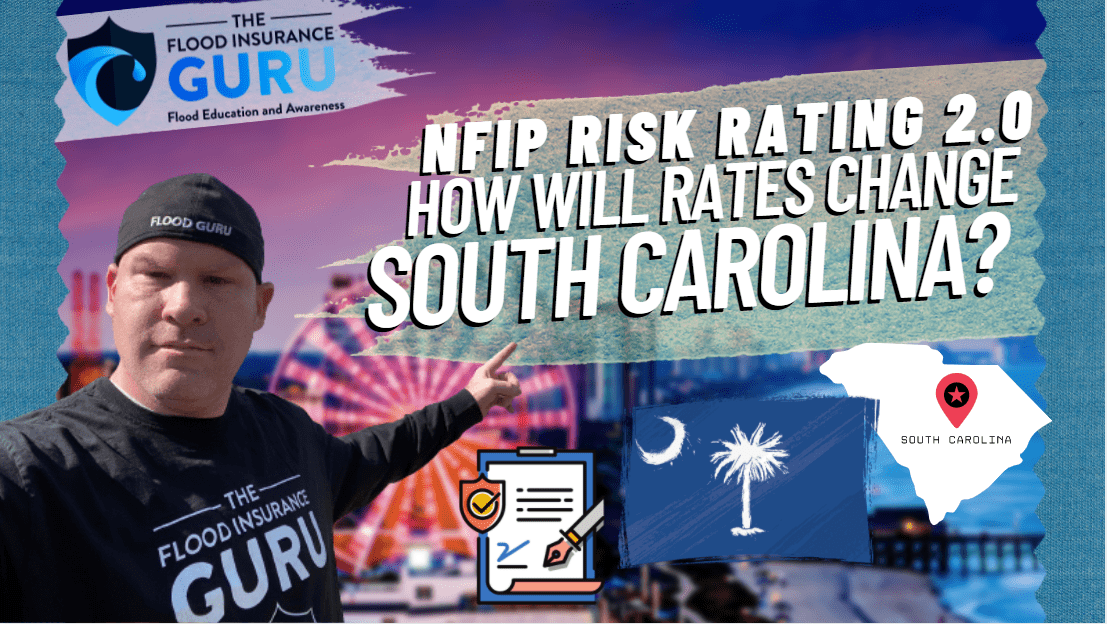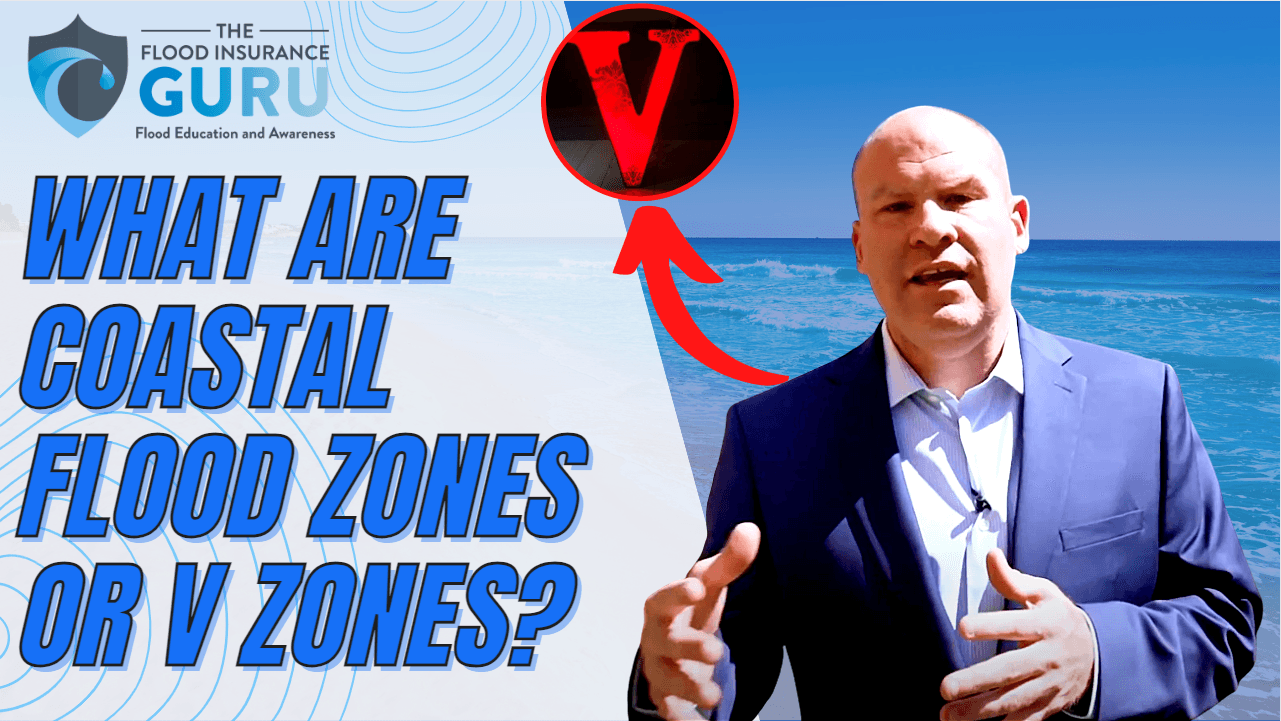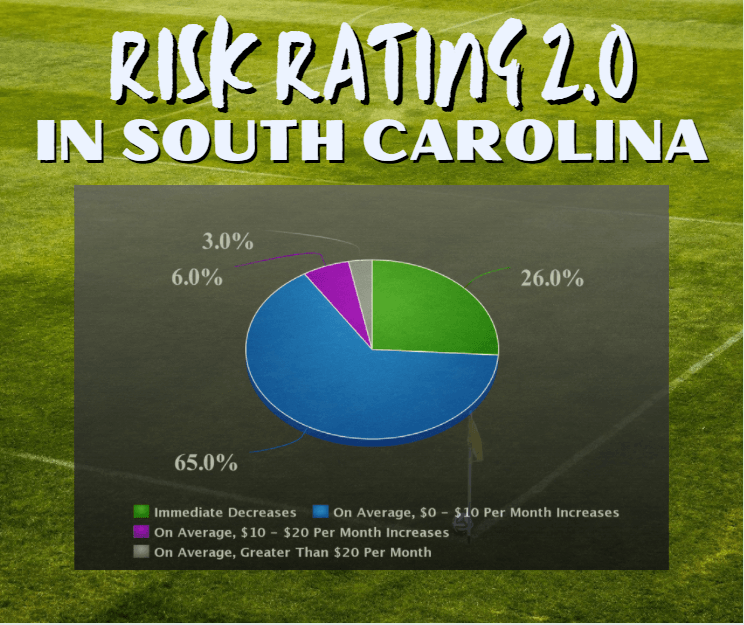South Carolina: New Federal Flood Insurance Risk Rating 2.0
July 10th, 2021
4 min read
By Chris Greene
The Federal Emergency Management Agency (FEMA) is rolling out changes when it comes to flood insurance rates across all states in the country. Today, we will unpack these changes coming to South Carolina and how they can impact your flood insurance in the future.

South Carolina, the Palmetto State, has been through a lot of flood events throughout history. This is no surprise considering that the state has a relatively big portion of it on the Atlantic coast. Just looking at the early parts of June, we've seen parts of the state flooded due to thunderstorms dumping torrential rain on the state. The rainfall went up to 4.4 inches in some areas like Charleston causing flood damage and power outages. This event is just a few days shy of the flooding that hit Goose Creek.
You also want to consider things like homeowners in Hilton Head Island and other coastal residents which generally receive a lot of the impacts in hurricane season since storms, thunderstorms, and low-pressure systems. These things can easily create multiple types of flood risk in these communities as it contributes to creating storm surge, runoff, or river overflows.
When things like this are constantly threatening your safety, you want to make sure that you get the best deal when it comes to protecting yourself from these flood risks. Today, we want to unpack the changes coming to the National Flood Insurance Program (NFIP) with the Risk Rating 2.0 and how it can impact flood insurance in South Carolina moving forward.
The Risk Rating 2.0 will start on October 1, 2021.
The NFIP 2.0

The Risk Rating 2.0, or commonly known as NFIP 2.0 as well, is more of a move of equity. This update on the federal flood insurance program itself will allow you to no longer pay more than your fair share when it comes to premiums as this would now be based on the value of your property or home starting this October.
This doesn't mean that an expensive property or higher-valued homes are the only ones to get rate increases with their flood insurance rates or flood insurance premiums, and lower-valued homes will see their rates go down. Property values aren't the only things that flood insurers look into when assessing whether or not your premium increases or decreases. You also want to look at:
- Substantial flood risk and flood frequencies in these communities
- History of flood loss and flood damage on the property
- History and number of flood claims made in the last 10 years
- Property's designation in flood zone maps A.K.A. flood maps. Is it in a high-risk flood zone or a low-risk flood zone?
- Mitigation efforts made on the property. Does it have enough flood openings? Is the lowest floor above the base flood elevation?
As you can see, insuring your building, be it a residential property or a commercial building listed, will have a lot of things to be considered when writing your flood insurance policies. We highly recommend that you don't solely rely on flood insurance companies, regardless if it's the federal government or private insurance companies, to determine this for you. It's best to know these things as well, so you have a high level of understanding of the actual flood risks you're facing.
When it comes to the rate changes happening across the country, you're going to see these colors in ranges which represent these changes with flood insurance rates from FEMA. Now, each of these colors represents the good, the bad, and the ugly changes coming to each state.

The Good
First, let's start this off with the good things coming to residents of South Carolina once the Risk Rating 2.0 starts to kick in. We'll have this shown as the green portion of the graph.
We're talking about 26% or 53,215 policies FEMA has in force being impacted by this good change. This change will bring you a decrease in your federal flood insurance rates starting this October or when you adopt these new ratings from FEMA.
The decrease will be up to more than $100 (>$1200 per year) and can immediately take effect once you got everything covered with your flood insurance with FEMA. This can really help a lot of people especially if you're paying for expensive FEMA flood policies or properties mapped into that Flood Zone V or the coastal flood zone.

The Bad
Now, if there's good news, you can expect to also have bad news with these changes. This time around, we'll be showing this as the blue portion of the graph.
As you'll be able to see, this bad change will impact the largest number of policies in the state; covering a whopping 65% or 137,604 of the policies in South Carolina. This will be bad for those impacted since you're going to start seeing a slight increase in flood insurance rates with FEMA.
The increase will range from $0 to $10 per month ($0 - $120 per year) for those in that blue portion. This means that you may not experience any change with your flood insurance once the Risk Rating 2.0 starts or you can get up to a $10 per month increase on your rates.
The Ugly
Lastly, let's talk about the ugly changes which will impact a total of 9% of the policies in the state. Now, we'll show these as the pink and grey portions which are going to get you still an increase however this time around, the grey portion will be a much uglier change for those impacted.
The pink portion will cover 6% or 12,469 policies in South Carolina. This will get you an increase ranging from $10 to $20 per month ($120 - $240 per year). Now, this changes up the rates since regardless of where you fall in that range, you're still going to pay for higher rates thus premiums when the Risk Rating 2.0 starts to take effect.
The grey portion will be covering the other 3% or 5,276 of the policies in the Palmetto State. This is the uglier change because the increase will be more than $20 per month (>$240 per year) for those impacted. Generally, this could also mean that you might even start seeing that $100 per month increase on your FEMA flood insurance rates. This increase can really hurt a lot of people especially those who are in a high-risk flood zone or special flood hazard area (SFHA).
You can see the graph of these changes here:

When Will It Happen?
Now, the date when you can adopt this program really depends if you're doing a renewal or if it's a new business policy. You see, you can expect these changes to start on October 1st and you're going to adapt to these rate changes if you're buying flood insurance from FEMA on or after that date.
On the other hand, if you're doing a renewal with FEMA after that date then you don't have to take in these new rate changes until April 1st, 2022.
So, you want to be very ready for this. We've been talking about this since last year since basically the NFIP is already 30 years old already and is in need of this change.
If you have questions on these upcoming changes, what are your flood insurance options in South Carolina, or anything about flood, reach out to us through the links below. You can also watch this on our YouTube channel.
Remember, we have an educational background in flood mitigation and we want to help you understand flood risks through education and awareness in flood insurance and preparedness.




